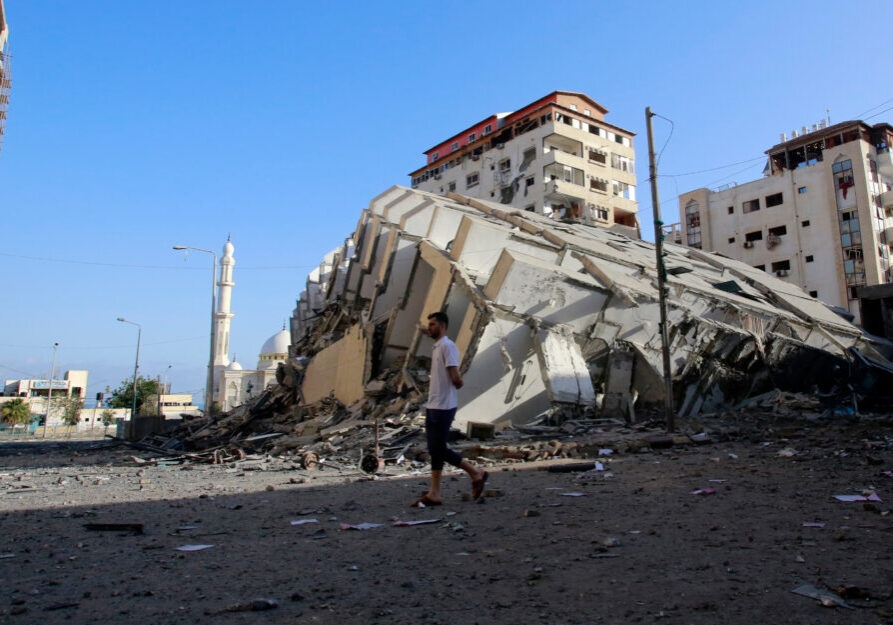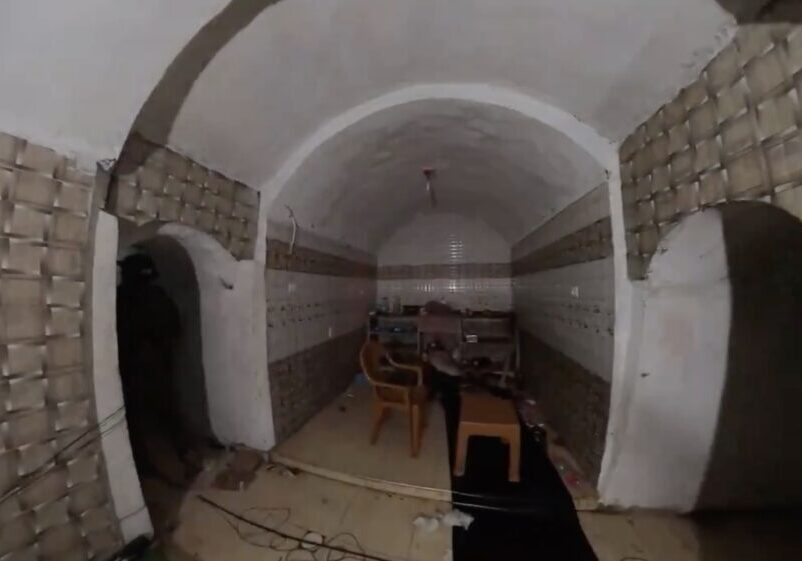Australia/Israel Review
Minority Report
Dec 1, 2007 | Amotz Asa-El
By Amotz Asa-El
 |
| Like it or not, Israeli Arabs are demographically converging with their Jewish neighbours |
In 1949, the newly born Jewish state’s Arab minority seemed like one of its lesser problems. With a mere 200,000 Arabs left within Israel’s borders the morning after its War of Independence – less than a fifth their prewar number and just under a fifth of the fledgling state’s rapidly growing overall population – Israeli leaders set out to foster a live-and-let-live mentality between the Jewish majority and Arab minority.
For decades, it worked.
The Arab population, which was concentrated mainly in the relatively remote and predominantly rural Galilee mountains, generally refrained from challenging the state. The community’s largest political organisation, the Communist Party, espoused a secular ideology, took orders from Moscow and made a point of including Jews among its leaders. While vociferous in its demand that displaced Arabs be restored to Israel, the Israeli Arab community’s best-known leader at the time once said of his situation that it was tragic because it meant that his people and his state were at war.
That lawmaker, Tufiq Toubi, who served in the Knesset for 40 years, had no compunctions presenting Israel publicly as his state, warts and all, and was also respected by mainstream Jewish Israelis as a legitimate part of the political landscape.
Meanwhile, the government also made efforts to improve the conditions under which its Arab minority was living, most notably by lifting in the mid-60s the military rule that had been imposed on much of the Galilee for the previous decade-and-a-half. The inter-communal relationship endured two supreme tests: when the Israeli Arab community sat quietly in its homes while Israel and its neighbours fought the Six Day War of 1967 and the Yom Kippur war of 1973.
Now all this seems like prehistory, as Israeli Arab leaders espouse a new radicalism, whether religious or secular, while a sense of contention is palpable – politically, ideologically and socially.
The violent turning point in Israeli Arabs’ attitudes toward their state came in 1976, when riots broke out in parts of the Galilee in the wake of land confiscations. As violence escalated, then-Prime Minister Yitzhak Rabin sent in troops and by the end of the skirmishing, six Israeli Arabs were dead. That day, which came to be known as Land Day, is now marked every year not only as a commemoration for the victims of that day’s violence, but also as an opportunity to generally decry what Israeli Arab leaders increasingly depict as the tragedy of Israel’s emergence.
Still, even after 1976 Israeli Arab leaders stopped short of fully joining the violent Palestinian struggle against Israel during the first Intifada from 1987 to 1990. However, in Sept. 2000, as the second Intifada broke out following the failure of the Camp David talks between then-Palestinian leader Yasser Arafat and then-Israeli Prime Minister Ehud Barak, riots broke out across northern Israel, as local Arab youths stoned vehicles driving along northern highways and torched post offices, banks and bus stops. The government of Ehud Barak, which at the time was already facing Palestinian violence in the West Bank and Gaza, fearing Israel’s worst nightmare – war with an external enemy aided by a fifth column within Israel – sent in the police in force. By the time order had been restored, there were 13 rioters dead. In the following half decade, Israeli Arabs frequently applauded, occasionally aided, and sometimes personally performed suicide attacks on Israeli civilians.
All this violence followed, and was arguably the culmination of, a gradual radicalisation process of the Israeli Arab community’s leadership.
Politically, the 1990s actually began on an optimistic note, as the end of the Cold War and the signing of the Oslo Accords seemed to both assign Israeli Arabs with an important role and an historic opportunity – as bridge builders between Israel and the “New Middle East” which Oslo’s architect, then-Foreign Minister Shimon Peres, hoped to build. However, as the peace process failed in the following years, Israeli Arab leaders began to openly side with Israel’s enemies. Some demanded that Israel be declared a bi-national state, others that the Jewish longing for the Promised Land and Jerusalem be deleted from the national anthem, and still others sought to replace the blue and white flag.
Even more tellingly, some Arab lawmakers openly sided with Hamas and Hezbollah, and some even travelled to Syria where they publicly attacked Israel in the presence of Israel’s most sworn enemies, Syrian President Bashar Assad and Hezbollah leader Hassan Nasrallah.
Last year, this deterioration went a step further as the Israeli Arab community’s unofficial leadership, a committee representing Arab mayors, issued a document which they titled “The Israeli Arabs’ Vision of the Future”. The mayors’ open demands – including among other things, that Israeli Arabs be granted the right of veto, as a national minority, over aspects of public policy, and that Israel admit “the historic injustice caused to the Palestinians” by its existence – provoked even left-wing Israelis.
“The Jews, who like the Palestinians suffer from a historic trauma of a lack of independence and sovereignty, will not give up their right for self-determination,” wrote Hebrew University historian Gadi Taub. “There can be no accepting [an Israeli Arab] refusal to attribute to the State of Israel any measure of legitimacy as the state of the Jewish people,” wrote Hebrew University Law Professor Mordechai Kremnizer, referring to a failed dialogue between Jewish and Arab intellectuals under the auspices of the Israel Democracy Institute.
In fact, ever since the 2000 riots there has been a feeling among Israeli Jews that Israel’s Arabs have been hijacked by extremists who are bastardising the original two-state solution, hoping to turn it from a vehicle for reconciliation into a tool for dismantling the Jewish state, even if only gradually and from within.
This feeling was recently further exacerbated when Israeli Arab lawmaker Ahmad Tibi called on Palestinian leader Mahmoud Abbas to reject Prime Minister Ehud Olmert’s demand that the former declare Palestinian acceptance of Israel as “a Jewish state.”
Faced with such attitudes, Jewish nationalists, led by cabinet minister Avigdor Lieberman, suggest territorial exchanges whereby some Israeli Arabs in border areas with large Arab majorities would become Palestinian citizens without relocating. These suggestions have been flatly rejected not only by all Israeli Arab leaders, but also by Israeli liberals.
What leaves the latter puzzled, however, is the universal rejection on the part of Israeli Arab politicians of the idea that Israeli Arab high-school graduates should perform some form of national service that would substitute for the military service most Jewish Israelis must do (no-one expects most Arabs to do actual military service in the near future.) Advocates point out that such a scheme would make it easier for young Israeli Arabs, later in their twenties, to find housing and jobs. However, Arab lawmakers like Muhammad Barakei say this is part of a plot aimed at turning Arabs into Israelis.
Jewish Israelis, at the same time, point out as a positive example the Druze community, whose 100,000 members are much better integrated into Israeli society because they identify with it. This minority – which is Arab by nationality, but whose secretive religion is derived from Islam but not traditionally accepted by Muslims as Islamic – voluntarily serves in the Israeli army. Over the years, Druze Israeli soldiers have developed a reputation for bravery, have risen through the ranks all the way to Major-General and in fact many have died in battle.
The common Israeli hope – that Israeli Arabs serve in hospitals, schools or welfare organisations for two or so years as a substitute for military service – remains for now a distant prospect; the zeitgeist is for now radical, and the approach of the Annapolis summit has done nothing to change any of this.
Even the unprecedented appointment of a Muslim legislator, Labor’s Raleb Majadleh, as Culture Minister in Olmert’s cabinet, has done little to offset either the pervasive sense that Israeli Arabs win far fewer budgets and public-sector jobs than their proportionate share of the population, or the anti-Zionist ideologies which remain pervasive. Radicalism occasionally grips even the fringes of the Druze community. In one case recently, some Druze youths engaged in a violent riot in the Galilean town of Peki’in before being stormed by police who wounded some of the rioters.
Some of the confidence currently displayed by Israeli Arab leaders reflects a conviction that demographics are on their side in the long term.
After all, throughout the state’s history, the average Israeli Arab woman’s fertility rate was roughly twice that of her Jewish counterpart. Only Israel’s continuous absorption of Jewish immigrants has maintained the Israeli Arab community’s share of the overall population more or less constant at roughly 18 percent. But then again, data released recently by the Central Bureau of Statistics indicates that the demographic balance may actually soon turn against the Arabs.
After having borne since the 1990s 4.7 children per woman annually, and before that more than five, Israeli Muslim women now bear an average of 4.4 children. This is still higher than the Jewish average of 2.7, but this Jewish rate is stable while Muslim fertility is declining rapidly, as family planning quietly spreads where it once was unthinkable (the Druze woman’s fertility rate has plunged over the past two decades from 4.1 to 2.7 children, and the Christian Israeli Arab rate from 2.7 in 1996 to 2.2 children per woman in 2004).
Apparently, whether they like it or not, Israeli Arabs are influenced by Israeli Jews after all.
![]()
Tags: Israel






